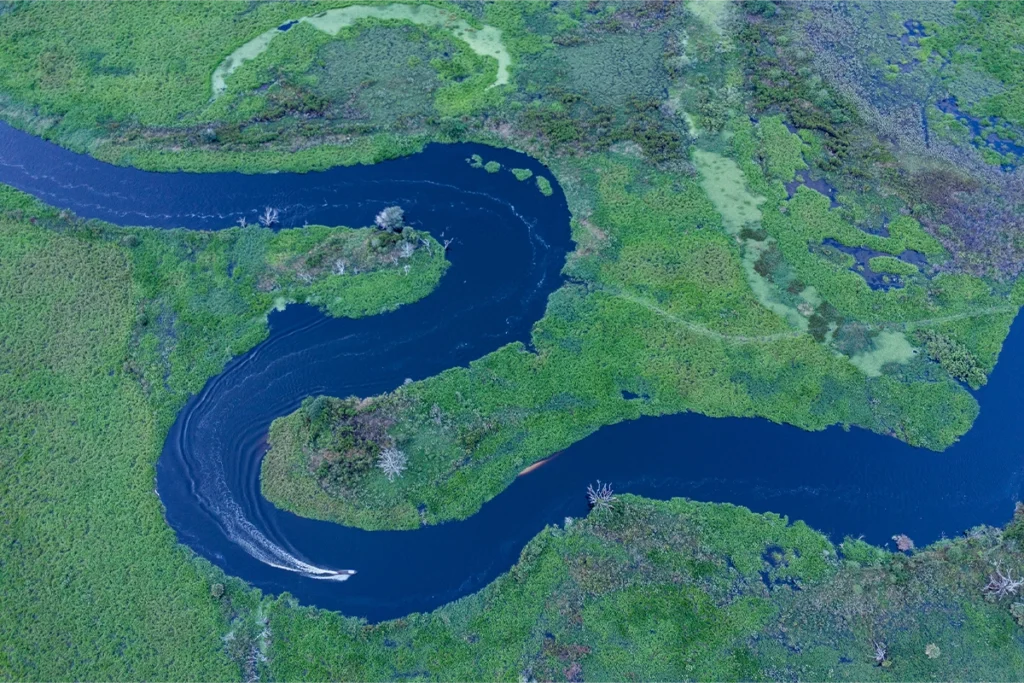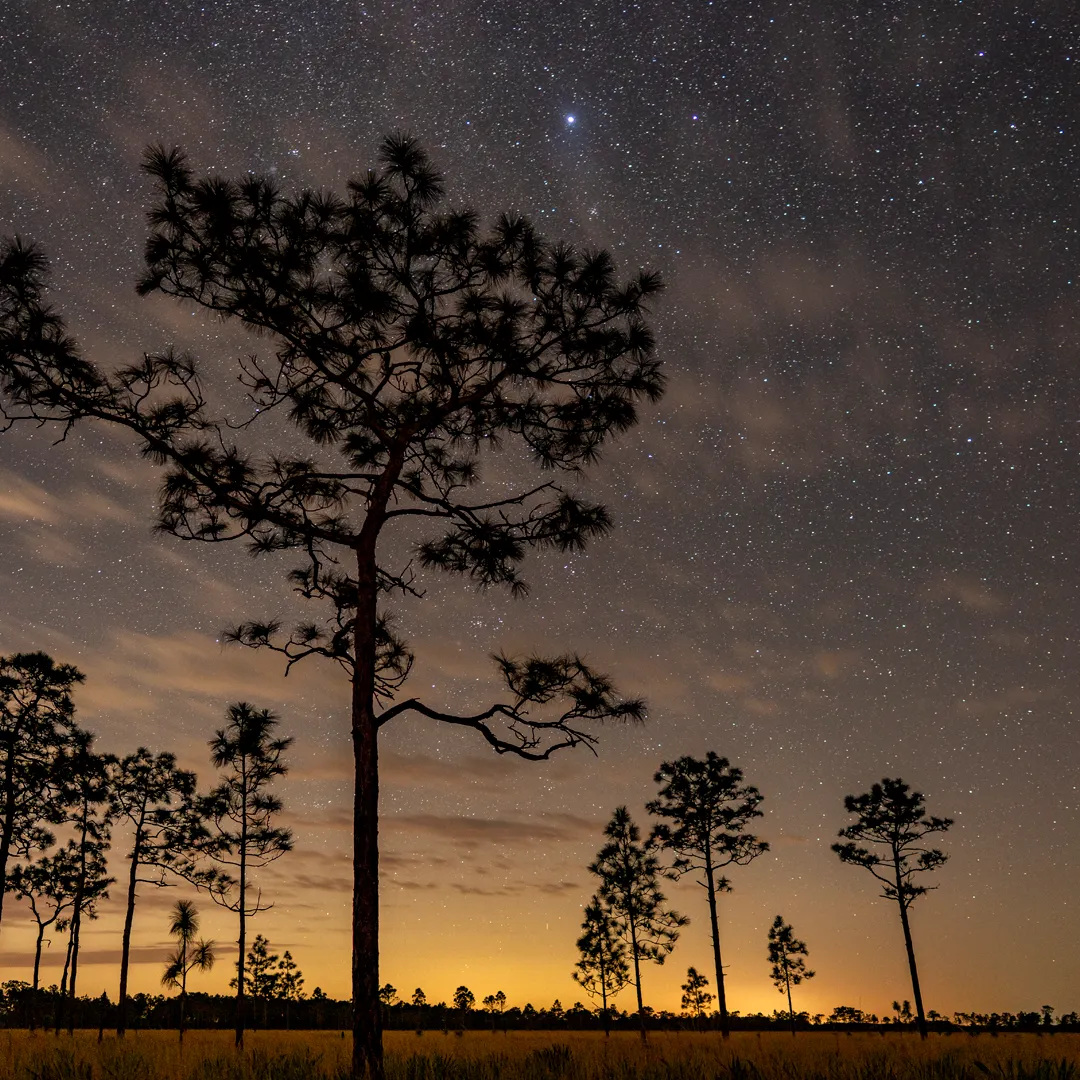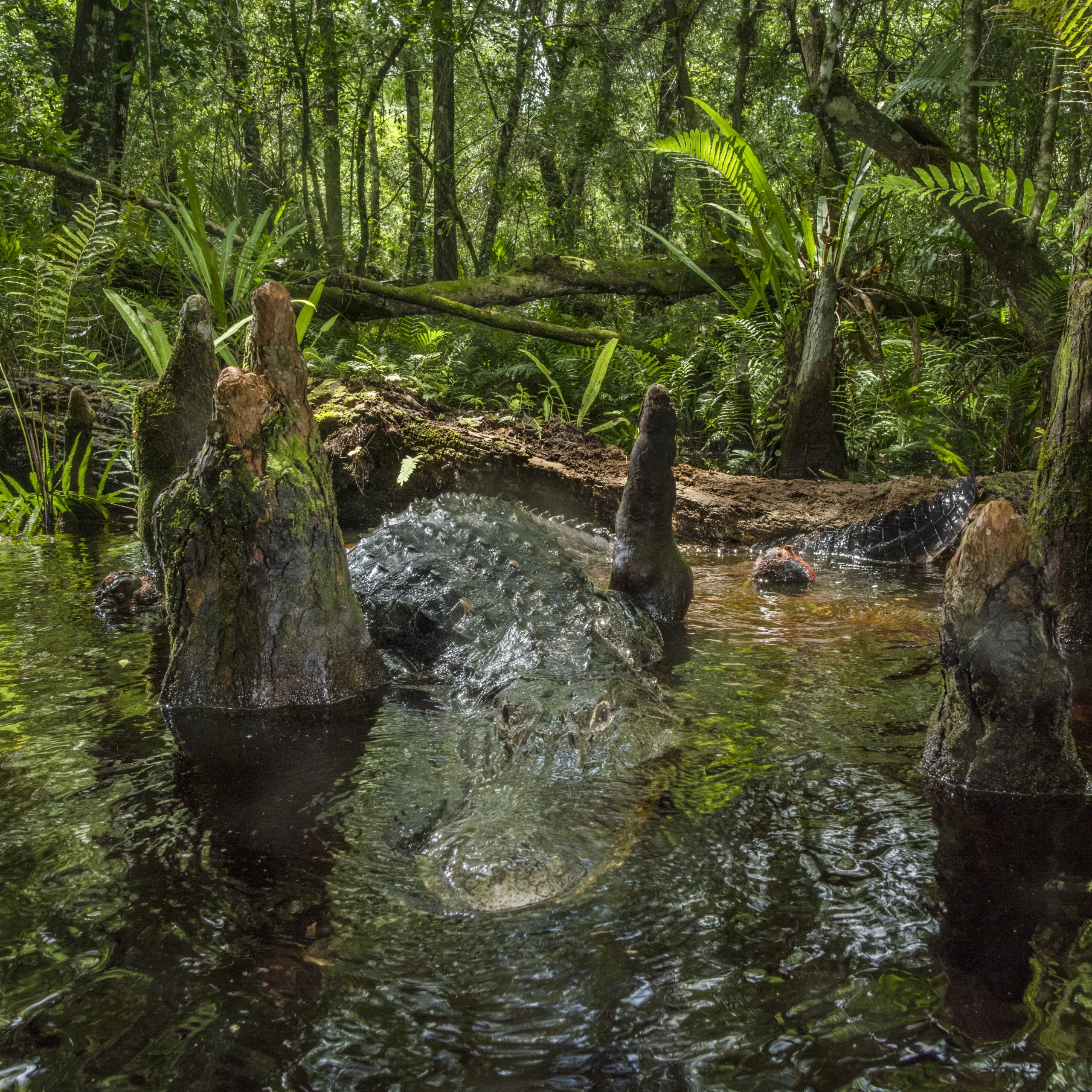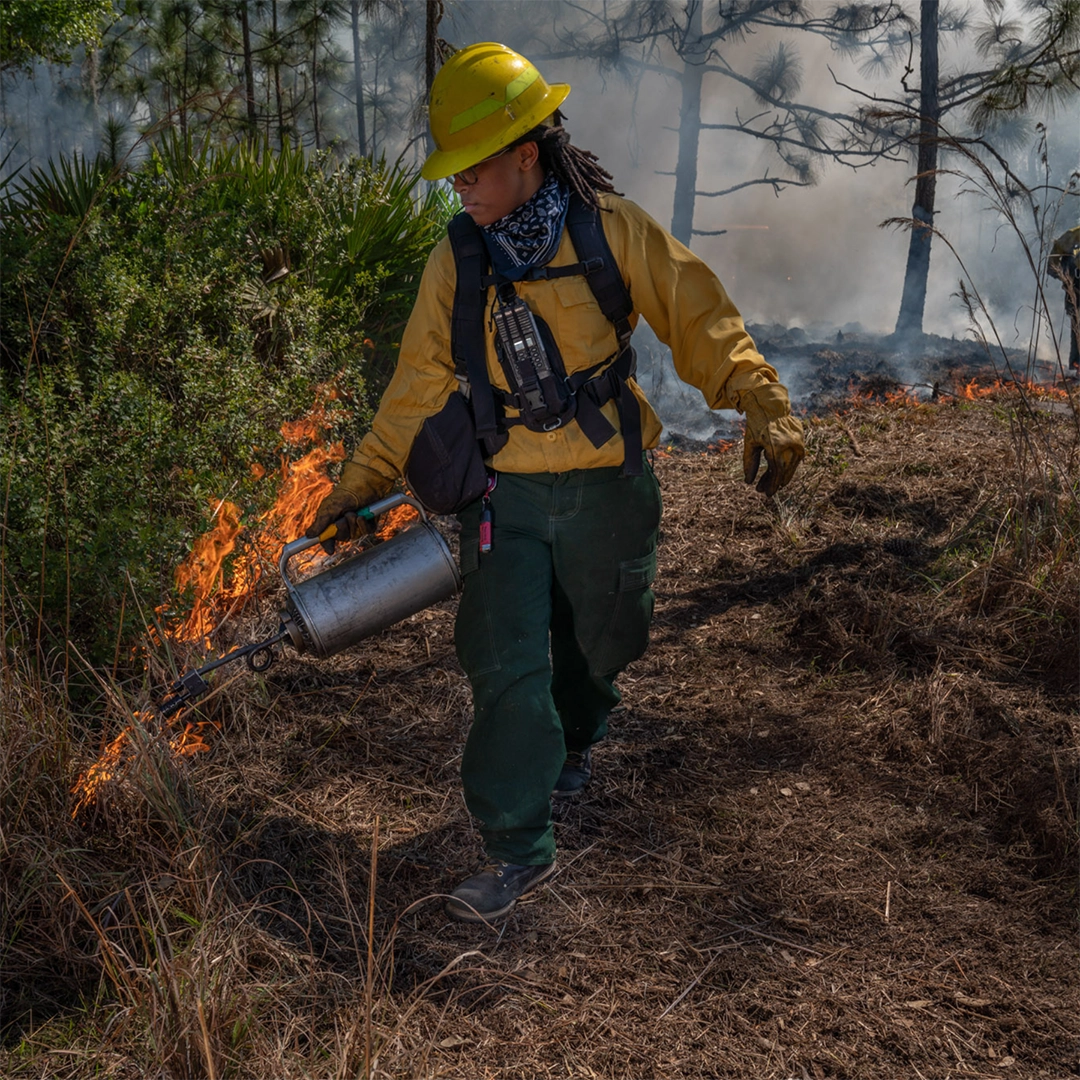by | July 9, 2025
Kissimmee River Restoration
Travel down the restored Kissimmee River for bird sightings and environmental lessons with wildlife photographer Carlton Ward Jr.

The Kissimmee River, flowing from Lake Kissimmee to Lake Okeechobee, is the heart of the Everglades Headwaters—and the stage for one of the world’s greatest environmental restoration stories. During the past century, Florida’s abundant fresh water, particularly in Central Florida, was seen as a blockade to development. The solution was to dig canals to drain the land. For the first half of the 20th century, the meandering Kissimmee River would fill a floodplain several miles wide during the rainy season. In the 1960s, the Army Corps of Engineers dug a straight canal—300 feet wide and 30 feet deep—to dry out the river valley, lowering lake levels at the top of the Everglades watershed to facilitate development near Orlando. On top of this, the Herbert Hoover Dike had already been built to contain Lake Okeechobee, and the St. Lucie Canal and parts of the Caloosahatchee River were dug to divert lake water directly to the Gulf of Mexico and Atlantic Ocean.
An unintended consequence of the Kissimmee canal was that water racing down from Orlando was loaded with nutrient pollution, in large part because the once naturally wide and shallow floodplain could no longer do its job of cleaning the water. That led to Lake Okeechobee becoming overloaded with water and pollution. Area wildlife declined. Within a few years of completing the canal, the abundance of waterbirds fell by 90%. These problems compounded throughout the Everglades watershed.
The solution was one of the most expensive river restorations in history, totaling more than $1 billion. The project meant filling in long stretches of the Kissimmee canal and restoring the river’s historic S curves in order to slow down the water and rehydrate the historic floodplain. The physical restoration began in the 1990s and was completed in 2021. Not all the river’s original bends could be restored, because removing the entire straight channel would back the water up too much, increasing flood risk for homes and businesses built close to the Kissimmee Chain of Lakes Area after the canals were cut.
Shortly after the physical restoration was complete, I traveled the length of the Kissimmee River in a mud boat with conservationist Adam Bass. In this photo, which I captured with a drone, Adam is navigating the turns of a restored section of the river near Basinger. From above and along the water’s edge, the Kissimmee felt wild and free, and an abundance of birdlife had already returned.
Elsewhere in the state, there’s still time to apply the lessons of Kissimmee. On Florida’s northern Gulf Coast, for example, we have a chance to preserve entire river systems like the Withlacoochee and Suwannee, and conserve all the environmental benefits they provide. While restoration is possible and can be largely successful, the far better option—for ecological and economic reasons—is to protect natural river floodplains, and let them run free.





